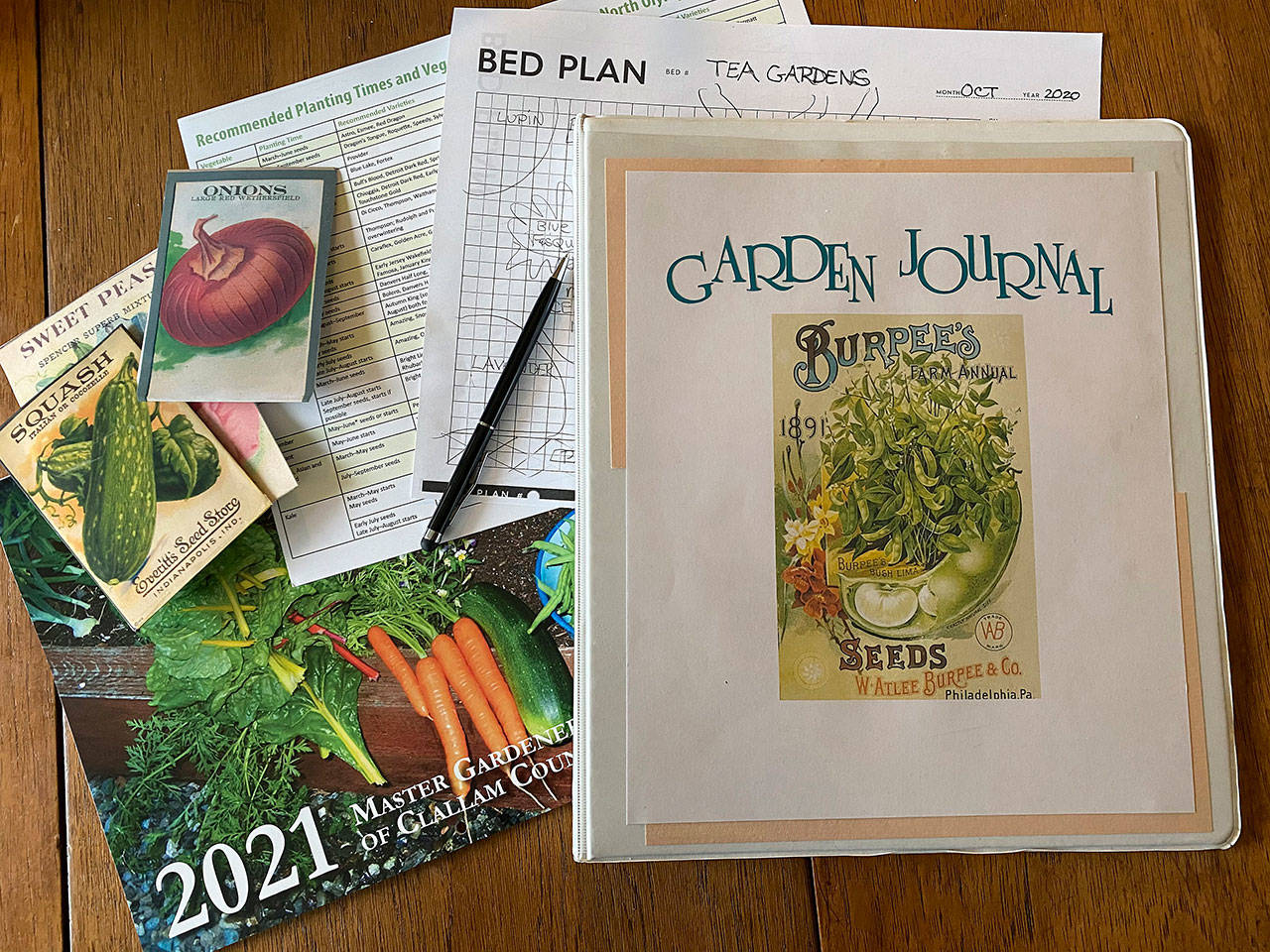Who hasn’t planted spring bulbs and enjoyed their bloom only to accidentally dig them up in the fall? Or sown vegetable seeds vowing to remember what, when and where, and then promptly forgotten all three.
Keeping a garden journal is a wonderful way to keep track of the what, when and where, and perhaps even the why. Journals can increase your knowledge and enjoyments of the garden by helping with organization of important components of gardening such as smart plant choices, timing of garden maintenance, and anticipating the flow of the seasons. It is a way to think about what worked, what didn’t, and reflects what you have accomplished.
How and when you start a journal is not as important as just starting one. Fall and winter can be a great time to start, while the past season is still somewhat fresh in your mind.
Journal styles abound
There are a lot of options when considering a garden journal. They are quite adaptable to individual personalization, both in content and format. Start simple and build a system that is easy to use. The methods are endless; it could be anything from jotting notes on a calendar, purchasing an official garden journal or downloading a phone application.
If at a loss for ideas, a simple three-ring binder with dividers and plastic sleeves is an excellent way to start. Plant tags, seed packages and labels can be saved in the plastic sleeves. A calendar can be added for easy reference. Whatever the format, start with a few basic categories and add information as you go.
A page dedicated to each individual plant allows you to clearly record “what” you are planting. Leave room to list all the pertinent information and then keep notes on the plant’s progress. Recording the common name as well as the botanical name might be helpful.
Other information may include plant type (annual, perennial, bulb, etc.), cultural requirements (sun, shade, water requirement), and ideal planting/sowing dates.
For vegetable gardens, more detailed information on sowing, transplant and germination dates can be useful, followed by harvest dates and quality/quantity observations. Keeping track of varieties that perform well versus under-performing types will provide just the kind of information needed for continued success.
For future reference
Keeping notes on pest and disease problems with the plant(s) affected can be critical information. Adding the time of season, severity and damage caused will help predict and hopefully deter future problems. The type of treatment and resolution can be outlined, including records of any products used.
A weather log can be jotted on a calendar page, making note of the “when.” It should include first and last frost dates. In addition, collecting information on temperature, rain, snow, soil temperature and unusual weather events can help you understand your gardens microclimate. For example, tracking nighttime low temperatures in the fall can remind you to cover sensitive plants, such as tomatoes, to extend their season.
A landscape or garden plan is a great place to establish and maintain the “where.” For simplicity, separate your landscape plantings from your vegetable or fruit gardens. Just by nature, the food producing gardens will require more time and detail. A plan need not be to scale but using graph paper and adding distances is advised.
For a landscape plan, note the plant types and locations, be sure to include any bulbs or perennials that may not always be obvious.
For vegetable gardens, block out where each crop is planted. This information will be valuable in the future to evaluate plant performance and crop rotation.
As keeping a journal becomes an enjoyable activity, there will be other sections to add if desired, fertilizer schedules, purchases, vendors, costs, the list goes on.
“Why” keep a journal? Like any garden, a garden journal is not going to be perfect but the habit of observation will grow on you. And, they can be quite useful and fun to read back through over the years!
Susan Kalmar is a Clallam County Master Gardener.



